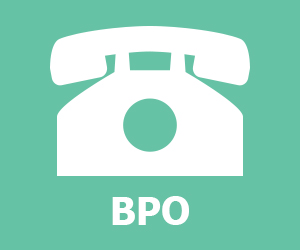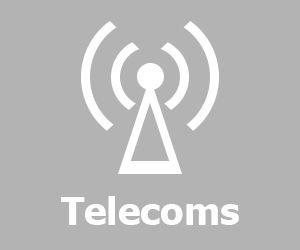Quick Overview
Delivering an excellent customer experience (CX) is an ongoing challenge for contact centre leaders, but did you know that the nature of these challenges is unique to the sector they are working in? This is seen across:
- BPOs (outsourcers)
- Banking
- Retail
- Housing
- Insurance
- Travel & Leisure
- Utilities
- Telecommunications
This article outlines and compares some of the unique challenges contact centres face – dependent on the vertical market they are servicing.
How Customer Service Differs Across Vertical Markets
Here is an overview of eight vertical markets and the unique challenges they face in their sector:

BPOs (Outsourcers)
BPOs have similar challenges to in-house contact centres – and some unique ones of their own.
They must deliver the CX their clients demand, more efficiently than clients can do themselves, while not burning out their agents despite expecting high levels of occupancy and multiskilling.
How do they do that?
Adapting and Scaling Up:
Just as in the natural world, success in outsourcing isn’t about survival of the fittest, it’s about the survival of the most adaptable.
Outsourcers need to be able to scale up quickly when new clients sign up. And they need to be able to scale down to reduce people and technology costs when business is quieter.
Minimizing Burnout:
BPOs pay constant attention to SLA performance. They set deliberate occupancy goals to minimize burnout.
They optimize scheduling to consistently match supply of agents with demand. And they empower their agents to manage their work/life balance on a self-service basis.
Thanks to injixo
Burnt-out employees have a significant impact on contact centres, so you should read our article: How to Avoid Employee Burnout

Banking
The banking industry faces several customer experience challenges as it strives to meet the evolving needs and expectations of its customers, including:
Digital Transformation:
With the rapid shift towards digital banking, financial institutions must develop user-friendly online and mobile platforms that offer seamless, secure, and efficient transactions.
Failing to adapt to digital advancements can result in a subpar customer experience (CX) and loss of market share.
Personalization:
Customers increasingly expect personalized banking experiences tailored to their needs and preferences. Banks must leverage data analytics and customer insights to offer relevant products, services, and advice, enhancing CX and loyalty.
Security and Privacy:
As cyberthreats continue to rise, ensuring the security of customer data and transactions is paramount. Banks must strike a balance between robust security measures and a frictionless CX, as overly complex processes can deter customers.
Omnichannel Consistency:
Customers expect a consistent experience across all touchpoints, whether in-branch, online, or via mobile. Banks must integrate their channels, processes, and systems to deliver a unified and satisfying CX.
Agility and Innovation:
The banking industry is increasingly disrupted by fintech companies offering innovative products and services.
To stay competitive, traditional banks must embrace agility, foster a culture of innovation, and adapt their offerings to meet evolving customer demands.

Retail
The retail industry encounters various CX challenges as it navigates the ever-changing landscape of consumer preferences and technological advancements, including:
Omnichannel Integration:
Modern customers expect seamless, integrated experiences across various touchpoints, including in-store, online, and mobile.
Retailers must invest in technology and infrastructure to facilitate a cohesive omnichannel strategy that unifies the customer journey.
Personalization:
Customers increasingly demand personalized experiences tailored to their preferences and shopping habits.
Retailers need to leverage data analytics and customer insights to deliver targeted marketing, customized product recommendations, and tailored promotions, driving customer satisfaction and loyalty.
Inventory Management:
Effective inventory management is crucial for maintaining optimal stock levels and fulfilling customer orders promptly.
Retailers must adopt advanced inventory management systems and processes to prevent stockouts, overstocking, and order fulfilment delays that can negatively impact CX.
Employee Training and Empowerment:
Frontline retail staff play a significant role in shaping CX. Retailers should invest in comprehensive training and support, equipping employees with the necessary product knowledge and customer service skills.
Empowering staff to make decisions on the spot can also lead to quicker issue resolution and improved customer satisfaction.
If you are looking for more information on employee empowerment, read our article: What Does Employee Empowerment REALLY Mean?
Adapting to New Retail Technologies:
Emerging technologies, such as augmented reality, virtual assistants, and AI-driven personalization, are transforming the retail landscape.
Retailers must stay up to date with these innovations and incorporate relevant solutions into their CX strategies to remain competitive and meet evolving customer expectations.

Housing
The housing industry faces distinct CX challenges as it strives to meet the diverse needs and expectations of homebuyers, renters, and property owners, including:
Personalization:
Customers expect tailored services that address their unique needs and preferences.
Housing providers should leverage data insights to better understand clients’ requirements and preferences, enabling them to offer personalized property suggestions and services.
Streamlined Processes:
Complicated processes and paperwork can hinder CX. Housing providers must strive to simplify and digitize processes, such as property search, application, and contract signing, to create a seamless and efficient experience for clients.
Responsiveness and Customer Support:
Prompt and effective customer support is crucial in addressing clients’ concerns and building long-lasting relationships.
Housing professionals should ensure timely responses to enquiries, offer multiple communication channels, and establish robust customer support systems to enhance client satisfaction.
Technological Integration:
The housing industry is gradually embracing digital solutions to improve CX. Providers must adopt relevant technologies, such as virtual property tours, online portals, and AI-driven property recommendations, to stay competitive and cater to the evolving needs of their clients.

Insurance
The insurance industry faces several CX challenges as it seeks to address the diverse needs and expectations of policyholders while adapting to technological advancements, including:
Simplification of Processes:
Insurance processes are often complex, with lengthy documentation and confusing jargon.
Insurers must simplify and streamline their processes, making them more transparent and accessible to customers, to enhance customer satisfaction and trust.
Personalization:
Customers increasingly expect personalized insurance products and services tailored to their unique needs and risk profiles.
Insurers should leverage data analytics and customer insights to offer customized policies, pricing, and recommendations, fostering customer loyalty and satisfaction.
Digital Transformation:
With the growing demand for digital services, insurers must invest in user-friendly online and mobile platforms that enable seamless policy management, claims processing, and customer support. Failure to embrace digital solutions can lead to subpar CX and loss of competitiveness.
Efficient Claims Management:
The claims process is a critical touchpoint in the insurance customer journey. Insurers must focus on swift and efficient claims handling, ensuring timely communication, transparency, and fair settlement to maintain customer trust and satisfaction.
Enhanced Customer Support:
Providing responsive and empathetic customer support is vital for building long-lasting relationships with policyholders. Insurers should offer multiple communication channels, train staff in effective customer service, and continuously monitor support performance to ensure a high-quality customer experience.

Travel & Leisure
The travel and leisure industry faces numerous CX challenges as it aims to cater to the diverse needs and expectations of travellers while adapting to an ever-changing market landscape, including:
Personalization:
Travellers increasingly expect personalized experiences that cater to their preferences and interests.
Travel and leisure providers must leverage data insights and customer feedback to offer tailored recommendations, promotions, and itineraries that enhance satisfaction and loyalty.
Omnichannel Consistency:
Customers engage with travel and leisure providers across multiple touchpoints, including websites, mobile apps, and physical locations.
Providers must ensure a seamless and consistent experience across all channels, integrating systems and processes to deliver a unified customer journey.
Agility and Adaptability:
The travel industry is constantly evolving due to factors such as changing regulations, economic fluctuations, and technological advancements.
Providers must remain agile and adaptable, adjusting their offerings and processes to address new challenges and meet shifting customer expectations.
Effective Communication:
Clear and timely communication is crucial for managing customer expectations and building trust. Providers should proactively inform customers about changes to bookings, policies, or travel conditions, and offer prompt support to address inquiries and concerns.
Embracing Technology:
Emerging technologies, such as AI-driven recommendations, virtual reality, and contactless services, are transforming the travel and leisure industry.
Providers must stay up to date with these innovations and incorporate relevant solutions into their CX strategies to remain competitive and cater to the evolving needs of travellers.

Utilities
The utilities industry faces several CX challenges as it navigates evolving customer expectations, regulatory changes, and technological advancements, including:
Digital Transformation:
Modern customers increasingly expect seamless digital experiences for managing their utility accounts and services.
Utility providers must invest in user-friendly online platforms and mobile apps that enable customers to access information, make payments, and request support with ease.
Personalization:
Customers demand tailored experiences that cater to their specific needs and consumption patterns. Utilities should leverage data analytics and customer insights to offer personalized recommendations, customized billing plans, and proactive alerts, thereby enhancing customer satisfaction and loyalty.
Clear and Proactive Communication:
Effective communication is crucial for building trust with customers and managing their expectations. Utility providers must ensure timely and transparent communication regarding service updates, outages, or changes to billing, and offer prompt support to address customer inquiries and concerns.
Enhanced Customer Support:
Providing responsive, empathetic, and knowledgeable customer support is vital for maintaining customer satisfaction.
Utilities should offer multiple communication channels, train staff in effective customer service, and continuously monitor support performance to ensure a high-quality CX.

Telecommunications
The telecommunications industry faces numerous CX challenges as it contends with rapidly evolving technologies, rising customer expectations, and intense market competition, including:
Network Quality and Reliability:
Customers expect high-quality, reliable network connections for voice, data, and internet services.
Telecom providers must invest in infrastructure and technology to ensure consistent network performance and minimize service disruptions, which are critical to maintaining customer satisfaction.
Digital Transformation:
As customers increasingly demand seamless digital experiences, telecom providers must develop user-friendly online platforms and mobile apps that enable customers to manage their accounts, access support, and explore products and services with ease.
Personalization:
Modern customers expect personalized experiences tailored to their needs and preferences. Telecom providers should leverage data analytics and customer insights to offer customized plans, targeted promotions, and tailored service recommendations, fostering loyalty and satisfaction.
Efficient Customer Support:
Providing timely, knowledgeable, and empathetic customer support is vital for building long-lasting relationships. Telecom providers should offer multiple communication channels, train staff in effective customer service, and continuously monitor support performance to ensure a high-quality CX.
Transparency and Simplicity:
Complex plans, pricing structures, and hidden fees can lead to customer frustration and mistrust. Telecom providers must strive for transparency and simplicity in their offerings, making it easy for customers to understand their options, compare plans, and make informed decisions.
Thanks to Joe O’Brien at Sabio
For more articles on contact centres, read these next:
- An Introduction to… Contact Centre Analytics
- An Introduction to… Customer Access Strategy
- An Introduction to… Championing Neurodiversity in the Contact Centre
- An Introduction to… Machine Customers
Author: Robyn Coppell
Published On: 10th Jul 2023 - Last modified: 18th Jul 2023
Read more about - Customer Service Strategy, An Introduction to Contact Centres, Customer Service, CX, Peopleware, Sabio



































